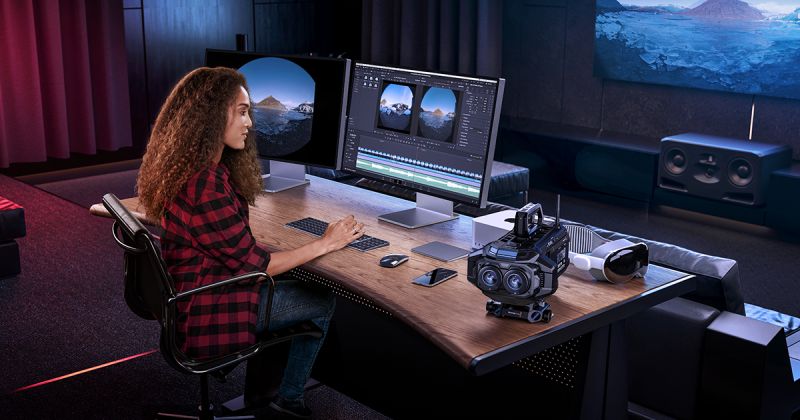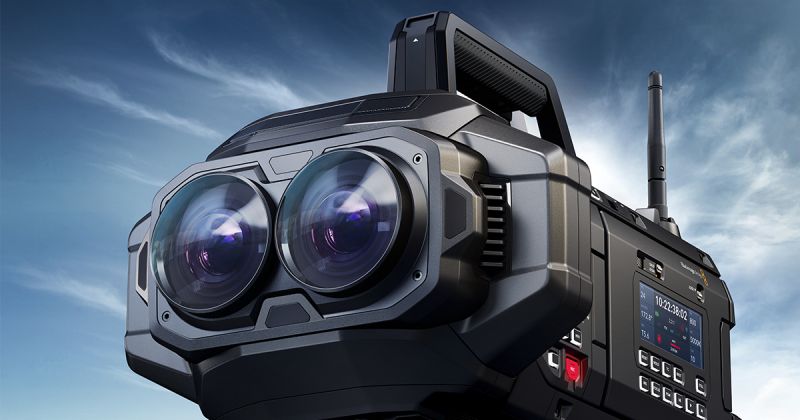Blackmagic Design has released a comprehensive new guide for its groundbreaking URSA Cine Immersive Camera, offering what is arguably the most detailed resource yet for filmmakers looking to step into the world of immersive storytelling.
At 156 pages, the free guide covers the entire workflow from camera operation and shooting strategies to post-production and delivery, making it an invaluable resource for creators exploring this emerging format.
Immersive filmmaking remains in its infancy, but with Blackmagic’s commitment to open access resources and clear technical explanations, the barriers to entry are coming down. This new guide follows the company’s tradition of publishing in-depth, no-cost manuals designed not just to explain the ‘hows’ but also the whys behind their technology.
The URSA Cine Immersive is purpose-built for Apple Immersive Video, a 180-degree stereoscopic format developed for Apple Vision Pro. Unlike traditional cinema or even 360-degree video, immersive filmmaking enables audiences to experience stories in three-dimensional space with a natural field of view, combining the best of cinematic composition with the presence of spatial video.

The Blackmagic guide doesn’t just teach button presses; it contextualizes the format itself, covering everything from exposure strategies at 90 frames per second to managing motion for comfortable viewing, to the nuances of delivery for Apple Vision Pro. For filmmakers, this means fewer unknowns and a smoother path into a format that can otherwise feel intimidating.
At the heart of the system is the URSA Cine Immersive camera, designed specifically for high-resolution stereoscopic capture. It features two matched 58-megapixel RGBW sensors, nearly square in aspect, paired with custom 210-degree fisheye lenses placed 64 millimeters apart to mimic the natural spacing of human vision.
The camera records dual 8K streams at 90 frames per second to match Apple Vision Pro playback, while also supporting alternative frame rates for other applications.
The camera has been designed to simplify what has historically been a very complex pipeline. While immersive filmmaking demands higher light levels, careful shutter management, and new approaches to framing, the combination of the URSA Cine Immersive and Blackmagic’s supporting software ecosystem, including DaVinci Resolve, makes the entire process more approachable than ever before.
What’s more, the new 156-page guide serves as a roadmap for creators, bridging the gap between traditional film practices and the unique considerations of immersive formats. From avoiding motion sickness-inducing pans to using lighting and leading lines to direct the audience’s gaze, the resource provides not just technical instruction but also creative best practices.

While immersive is not intended to replace traditional cinema, it offers a new layer of narrative possibility by placing audiences inside the story world rather than simply in front of it. Apple Vision Pro currently stands as the most advanced playback device for this format, with dual 3660 x 3200 micro-OLED displays, spatial audio, and precise head-and-eye tracking.
The technology is still young, but Blackmagic Design is clearly positioning itself at the forefront of this new chapter in filmmaking. By providing both tools and education, they are helping ensure that immersive storytelling is not just the domain of big studios but becomes accessible to independent creators as well. The URSA Cine Immersive guide is available now for free!

